Welcome back to our On the Campaign Trail series where I’m recapping my summer of running my 1972 Corvette through the rigors of NCRS, Bloomington Gold, and MCACN judging. Last time we left off with all my prep work completed and the NCRS Motor City Regional just around the corner.
You can catch up on the previous articles in this series here:
As part of the last-minute prep I decided to run through the operations section one more time on Sunday night to double check that everything was in working order. Formal ops judging was now just 4 days out on the coming Thursday. Unfortunately, I was unsuccessful getting my windshield washers working properly so I elected to sacrifice those points for now and focus my remaining time elsewhere.
Everything was going smoothly as my Dad and I ran down the list of functions until we got the high beam headlight function. Having previously replaced one of the high beams, guess what? The other one burnt out just days before the meet. Now I had 3 days to find a 1-year only headlight design that’s not reproduced by anyone. Monday morning I got to calling and emailing some local contacts in search of a functioning 1972 T3 high beam. By midday Tuesday I had located one and I picked it up Wednesday morning. That afternoon I installed it into the car. Phew!
Now Thursday morning was here and it was time to head to the meet. I just had to drive 50 miles on (one way) on bias ply tires for this 46-year-old car’s first-ever judging at a high-level NCRS meet in a car that I’d owned less than 9 months. Keep in mind that I’d put less than 100 total miles on the car since I’d owned it. What could possibly go wrong here?
Well, nothing went wrong. The car ran flawlessly the whole way. Well done, old car!
The NCRS evaluates cars based on historical accuracy. That is, how closely do they resemble a new Corvette as delivered to its original owner? In a nutshell, each car starts off with 4,500 points. Points are then deducted based on originality (how closely the specific part resembles the factory original) and condition (how has the part been restored or preserved) by 5 teams of 2 judges each. Each team can spend anywhere from 30-60 minutes evaluating your car. Once the dust settles and scores are tabulated, cars scoring 94% or higher receive the Top Flight Award.
I had 2 goals at the regional. The first, obviously, was to take home a Top Flight award. The second goal was to get a Bowtie signoff. The signoff is a prerequisite to vie for the prestigious NCRS Bowtie award strictly for unrestored cars. Bowtie judging is only done once per year at the National convention each July. Signoffs only occur at regional or national NCRS events and you have 1 year from signoff to enter your car for Bowtie judging. The process is informal in that during Flight judging each team evaluates the car strictly on originality only and recommends to the National Team Leader that the car is a Bowtie candidate. Meaning, is the given component the actual component installed on the car in St. Louis? The answer is either yes or no. The Bowtie signoff means that up to 4 sections of the vehicle is worth a closer look during Bowtie judging. It doesn’t indicate that you’ll actually get a 4 Star Bowtie award.
Upon arriving at the regional I was ushered off to a separate area (the time-out corner?) where the Operations judging would take place after the car cooled down a bit. An hour or so later I was summoned by the first judging team of the weekend. Game time was finally here. As the 2 judges ran through the various functions everything was going swimmingly until we got the lighting section. My freshly installed high beam worked just fine, but now the right rear parking light wasn’t working. Seriously? So I promptly jumped out of the car to see for myself. Sure enough it was dark. To remedy the situation, I quickly reached up between the hot muffler and the quarter panel and jiggled the connector to see if that would work. Success! I maintain that you’ll always have a ‘judging day surprise” when presenting your car. Something unexpected will almost always occur during judging. Just take that surprise in stride, keep calm, fix it quickly if you can, and move on. With my judging day surprise now out of the way, it was on to the remaining functions which passed without issue except for the windshield washers which I was willing to give up on this time around.
After the Thursday ops judging my car would sit in the judging tent until the 1970-72 class was judged on Saturday. This made for a nice relaxing Friday before the stress of the following day. I arrived at the meet about 6:30 am on Saturday morning and began removing the spare tire, air cleaner, and ignition shielding so the judges could see everything they needed to see. By 7:30 the tent was buzzing with activity as more nervous owners and eager judges showed up. About 30 minutes later, as I was leaving for the owner’s meeting, the first team of judges showed up. So much for the owner’s meeting. I handed off the green judging sheets to them and they were off and running. I had no concerns with the Interior section as it’s essentially 100% factory original. The judges agreed and I only lost 12 of the 750 possible points mainly due to age and light wear.
A few minutes after the interior judges showed up the Mechanical team arrived. So I had 2 teams going over the car at the same time. My confidence in the Mechanical section was high, but not as high as the interior. Again, the engine compartment is largely factory original, but it does have some patina in several areas. The engine block and valve covers especially have shed much of their paint. After about 45 minutes the team completed their duty and reviewed the scoring with me. This time I had only lost 35 out of 1,351 possible points. Not too shabby.
After about 20 minutes of downtime, the chassis team arrived for their turn. Chassis is my weakest area. 46 Michigan winters have, logically, had some effect on the bottom of the car. The good news is that other than the exhaust and a few other small items all the original bits where still present on the car. Even the stamps on the transmission, bell housing, and right front wheel well are still present. My only concern was how many points I’d lose on the condition side given the aging. This portion of judging seemed to take forever, but that was probably more in my head than anything else. Once the chassis judges were back up vertical I was happy to see that the condition deductions were more than fair. I really liked how they scored things. Out of 574 possible points, I still had 526 left when they were done.
It was just about this time too when the National Team Leader stopped by to say that he would be giving a Bowtie signoff for all 4 sections of the car. Off to Greenville, South Carolina in July 2019 for my first swing through Bowtie Judging!
Just like earlier, the exterior team showed up not too long after the chassis guys started. I had 4 guys at one time going over the car again. The paint on my car is in really good shape. There’s the usual stone chips up front, checking, wear on the fender lips, and smashed front spoiler, but overall its some of the best 46-year-old paint I’ve seen (of course, I may be bit biased here). Going into this section I was confident the score would be pretty good. In the end it was good – I lost 75 of 1075 possible points – but not nearly as good as I was expecting. This group graded hard like my high school physics teacher did. Personally, I thought it was a bit overkill in spots. For instance, my trim rings were deducted for originality as being too shiny, and then also lost condition points for having scratches. How are they both too shiny and scratched at the same time? Keep in mind that they’re original and have never been restored. I quick survey of other cars showed mine were far from the shiniest trim rings there. They also took points away on my license plate frames due to incorrect rivets. The rivets were indeed correct as I had sent them to a restorer / judge specifically to have the correct ones installed. The judging manual shows rivets that match mine. I bring these items up not to pound on the judges, but rather show that judges can make mistakes too. You should know your car better than them so don’t be afraid to speak up if you feel something seems out of line, but make sure you’ve got evidence to support your side of the discussion. Don’t argue. Clearly and calmly show why you’re not in agreement. The judges at all the shows will review the scoring with you. That’s your time to talk about the noted deductions. In my case I chose to let the issues go mainly because I knew I was still going to score high enough for Top Flight. Had I been close to missing Top Flight I would have said something. If it comes up again in future judging I will be sure to mention my concerns.
After a past paced 4ish hours, my judging day was done. I even had time to stop and sit for lunch. My judging sheets would show up in a couple weeks, but by my math the car scored about 96.5% – comfortably into Top Flight territory. I had to wait until the Saturday night awards banquet for confirmation.
The awards banquet was held at Les Stanford Chevrolet just down the road from the show tent. After a multi-course meal, former GM Design Chief Ed Welburn gave a short talk on the history of automotive design. From there it was on to the awards. I sat patiently waiting to hear my name called followed by what I really wanted to hear – “Top Flight”. NCRS Judging Chairman Dave Brigham presented my latest blue ribbon which I subsequently got signed by Welburn who also happens to be one of my automotive heroes, right up there with Lutz, Mitchell, Iacocca, and Earl. With both of my weekend goals achieved, I declared the Motor City Regional to be a resounding success.
A few weeks later my judging sheets arrived in the mail. Officially the car scored a 96.1% raw score. Adding in the 0.5% for driving to the meet gave me a grand total of 96.6%. I’m pleased with that score especially since this is the first time this car has ever been shown and I prepped it in less than 9 months. Factoring in the lost points from the trim rings, license plate frames, and inop washers I know it could score higher in future events. I also had a high level of confidence going into Bloomington Gold which was now 2 weeks away.
See you next time when I’ll recap the weekend that was Bloomington Gold 2018.
Source:
Photos by Steve Burns
Related:
Follow Along as I Campaign a 1972 Corvette Convertible
Preparing for Flight (Part 2)
[PICS] The NCRS Motor City Regional
-

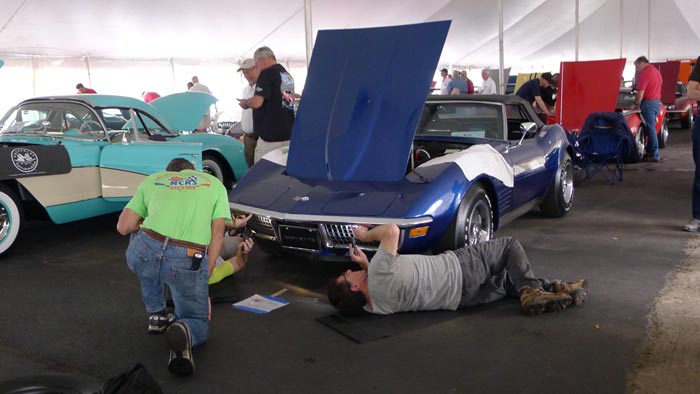
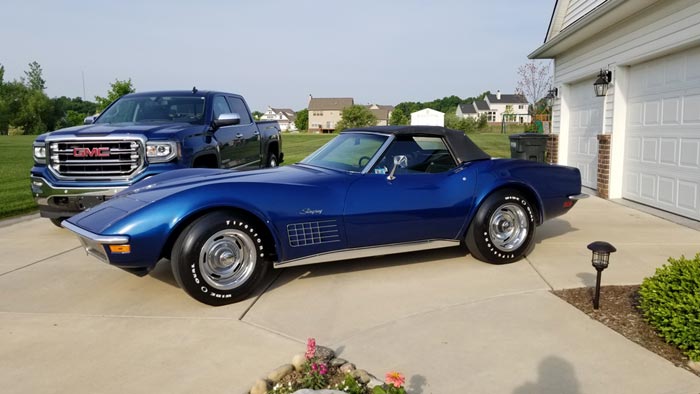
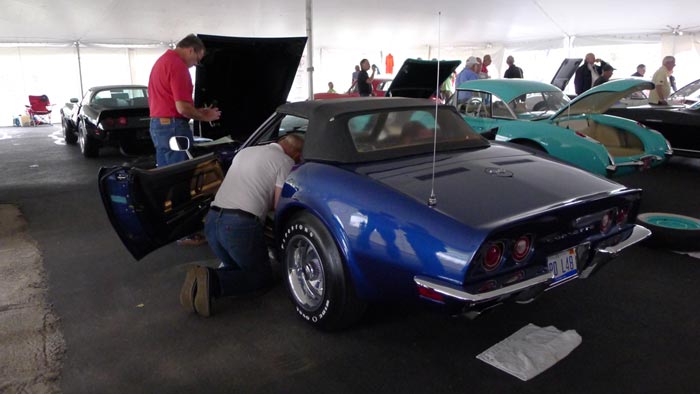
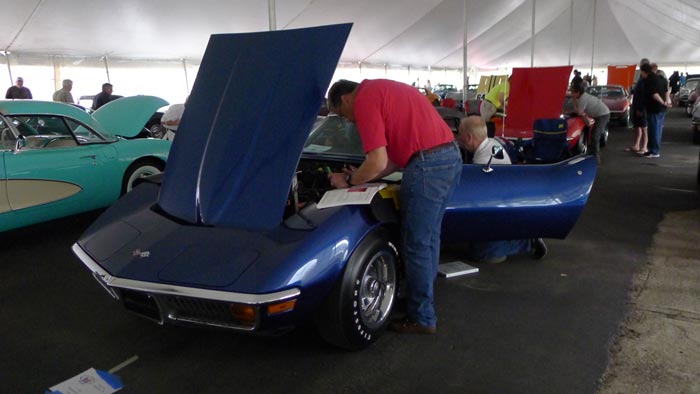
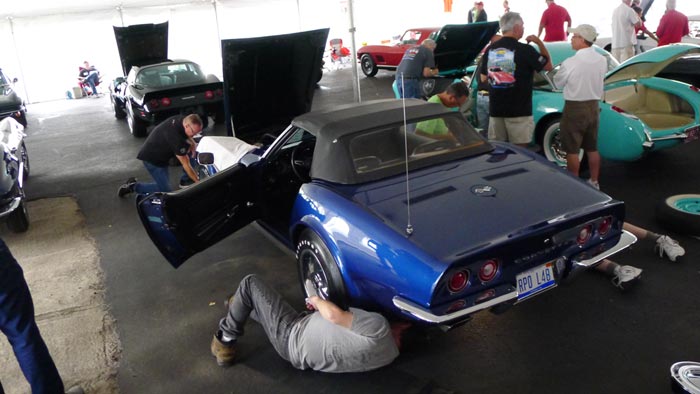

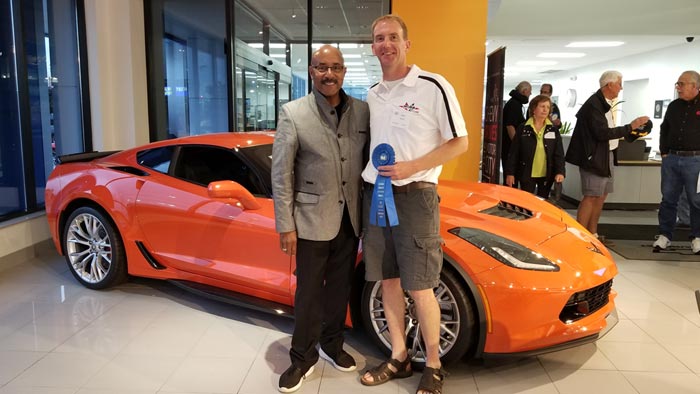
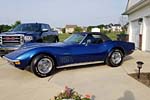
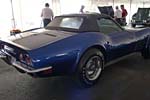
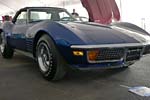
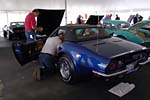
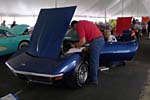
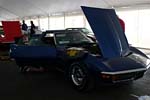
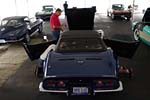
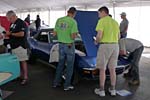
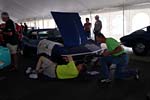
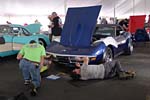
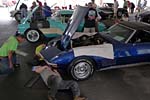
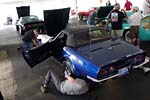
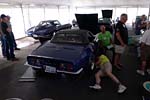
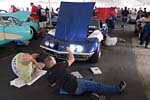
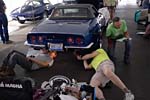
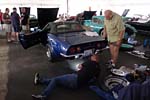
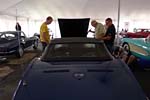
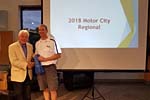
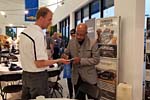
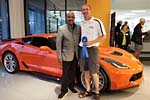


![[PODCAST] CORVETTE TODAY #210 – Celebrating 50 Years of the NCRS [PODCAST] CORVETTE TODAY #210 - Celebrating 50 Years of the NCRS](https://www.corvetteblogger.com/images/content/uploads/2024/04/042224_1-218x150.jpg)
Hi Steve,
I read your article with great interest. I used to show a 1963 Fuelie Split Window back in the 70s at NCCC shows and I thought that was tough. I can’t even imagine how you do this. My best wishes to you in the future meets with your car.
I do have a sort of question for you though. I’m a lover of personalized license plates going all the way back to the first car I owned in 1969. But my question is if the L48 was the standard engine in the ’71 Corvettes, is the L48 still considered an RPO? Please don’t take this as a personal criticism. I just would like to hear your take on this.
Thank you and good luck with your car.
Hi again Steve. I just realized my typo on the year of your car. I did mean 1972.
Hi Larry. Yes, the L48 is a RPO. Technically speaking the entire car is just a collection RPO’s with each respective feature – standard or optional – having its own RPO. So when a car is built they’re essentially tracked by a series of RPO’s unique to that specific car.
Comments are closed.